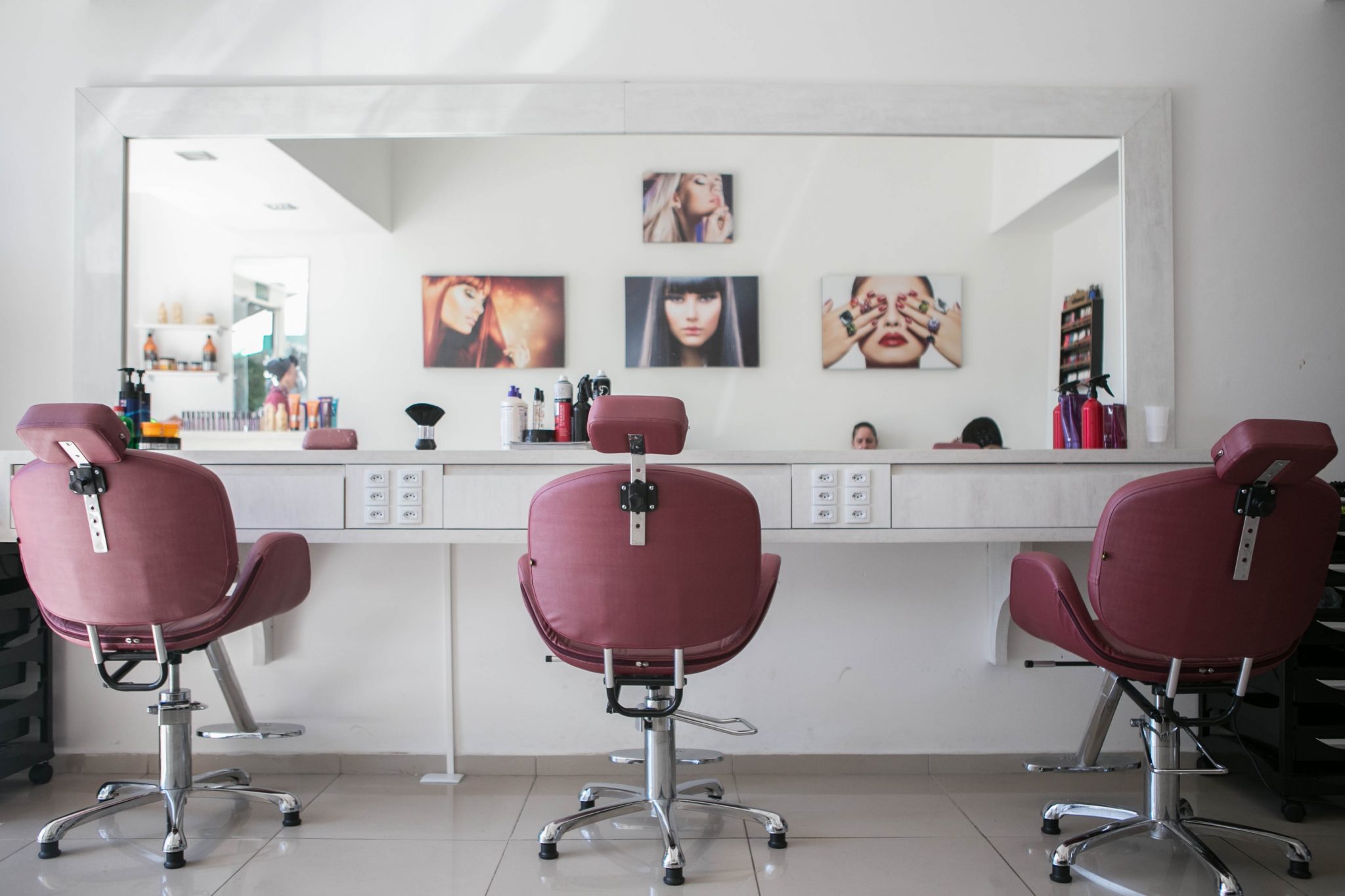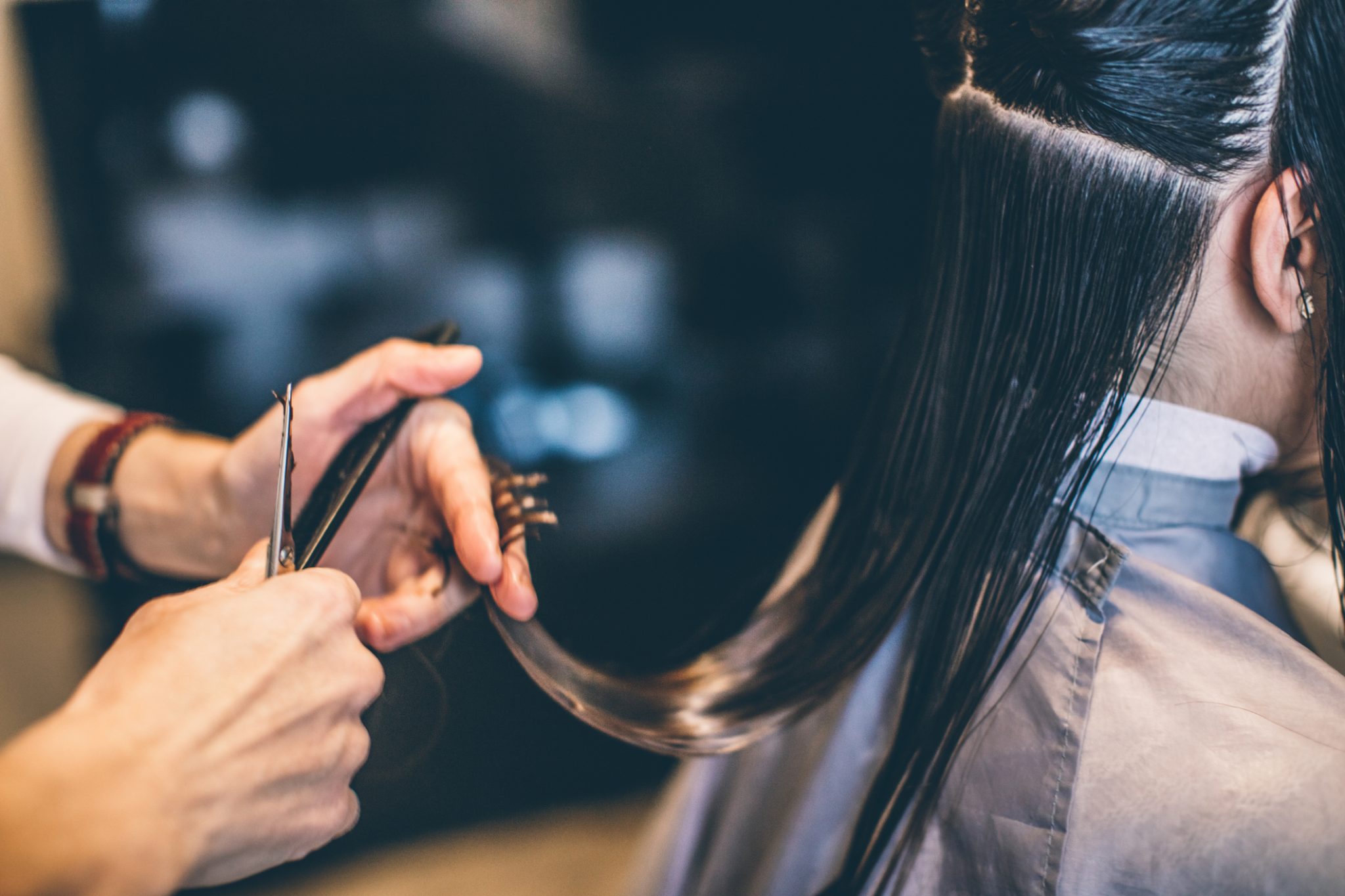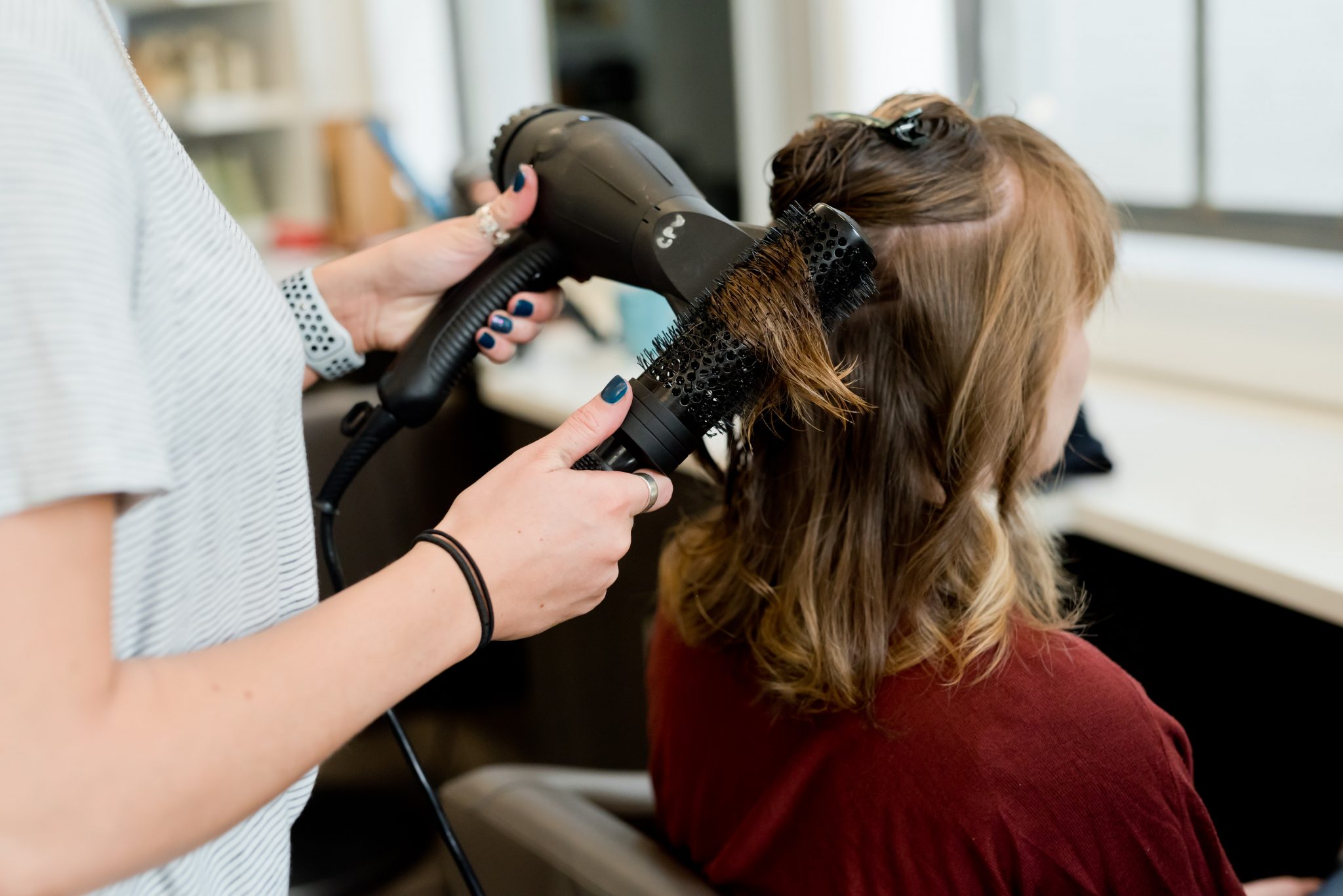Written by Hanna Ibraheem
Hair salons can reopen doors from tomorrow. But what will our future hair appointments look like?
UPDATE 3 JULY 2020: Hair salons can reopen from tomorrow (4 July).
On 23 June, Boris Johnson announced that hairdressers could resume business once again. However, they won’t be able to operate as before.
The spaces and etiquette surrounding appointments require adjusting in order to adhere to our new way of living. So what will this look like?
The government has published guidelines for hair salons with advice on steps they feel salon owners, members of staff and the customers themselves should be following. This includes social distancing for worker, cleaning the workplace, rules around PPE and face coverings and monitoring risk.
Lesley Blair, chair of BABTAC (British Association of Beauty Therapy & Cosmetology), who has been in constant discussion with government officials to help the beauty therapy industry safely return to work, told Stylist.co.uk: “It’s an immense change to the industry and there are many difficulties facing salon owners.”
When will hair salons reopen?
Prime Minister Boris Johnson has confirmed salons will be able to open their doors on 4 July as previously discussed, however as Blair explains, huge changes in the way they operate will have to happen.
“Currently, it’s impossible to comply with social distancing as it stands for treatments which is why we need clear, precise government guidelines on what we can do going forward,” she says.
“[The hair industry is] a high-risk category, which is probably why hair salons are one of the things that will be opening later compared to other industries.”
What will future hair appointments be like after lockdown?
For salons, Blair predicts there will be changes for the kind of contact that can be conducted in appointments and the set-up of the salon itself.
“This might involve no clients in reception,” she says. “Or, they may stop the nice cup of tea you enjoy prior to/during your treatment. There may be no magazines, no paper, no leaflets; that will all go away. It’ll be very stark – and perhaps no more than two people sitting in reception at any time.
“Even when it comes to the nice fluffy towels, we’re advising washing them after every treatment at 60 degrees or using disposable towels. Even with sink interaction, we’re advising you conduct any discussion and hair consultation online prior to the appointment, so there’s not as much face-to-face contact as you would normally have.
“We are a very hygienic industry anyway and already follow a lot of hygiene rules.”
Also weighing in on the conversation is Keith Conniford, Registrar of The Hair and Barber Council, an organisation set up by an Act of Parliament in 1964 which enables hairdressers to apply to become State Registered. Conniford also works closely with the government to regulate the hairdressing, barbering and beauty industry and tells Stylist.co.uk: “The preparation to get salons ready is critical but the key is that whatever precautions and whatever salon owners do to protect staff and customers, they must convey it.
“They must also make sure staff are trained to clean the units between customer appointments. All of the equipment has to be cleaned thoroughly. This could take 10-15 minutes between appointments to make sure everything is sterilised properly. But, hairdressers will need to make sure this doesn’t eat into appointment times. There’s also things like cleaning the fridge, dust filters in hairdryers, any tumble dryers, and descaling the showerhead.
“When training them, owners will need to communicate the process, what they expect and how long everything will take.”
“Also, customers will be very nervous and I think we do need to reassure them that we’ve done everything to look after them taken every precaution and really important to be communicated to them and staff.”
As for the appointments themselves, the best approach for salons and their workers is unclear until the industry receives clearer guidance from the government. Until then, Conniford (who has developed his own work plan to sit beneath government guidelines but is holding off releasing it until there’s an official line to follow) advises doing what you can to maintain social distancing in an industry that relies on close contact.
“Not many hair salons will have a reception area big enough to allow social distancing, so people might have to wait outside or in their cars until they get called to come in,” he says.
As for the actual appointment, Conniford stresses that while salons need to hone in on people’s safety, it has to be to a degree where hairdressers can still work efficiently.
“It’s a hands-on industry, we work closely with people,” he says. “But one of the good things, when we’re working is that we’re not facing the customers. We often stand behind and talk through the mirror. That’s a huge plus.
“Obviously you can do partitioning between the customers but that’s an extra cost for salons that have already been closed for three months. As for hair washing, you can stand further back rather than leaning over them and we should avoid dry cutting for now, only cutting hair when it’s been washed and cleansed.”
With the absence of any strict guidelines from the government, neither Blair or Conniford can advise on exactly how hairdressers should cover up during an appointment when the time comes to reopen salons again, but they both suggest wearing a surgical mask, gloves and disposable aprons, and asking clients to do the same, might be the way forward.
“The most important thing is to wash your hands often and always between appointments,” says Blair. “Ask clients to wash them when they arrive and leave, too.”
Conniford notes: “Gloves can have an impact on the intricacy of scissor work, while the string from your face mask can get in the way of cutting around the ears but hairdressers and clients will have to get used to these things.
“You don’t really have much of an option.”
How can clients work with hair salons to ensure safety?
Of course, the onus doesn’t lie solely with the hairdressers themselves. We, as customers, will need to do all we can to make the salons as safe a space for everyone when they open.
Blair advises foregoing coats if it isn’t cold, handbags, jewellery, scarves and lots of clothing layers: “Obviously we’ll have some clothing but let’s minimise the risk and the transference as much as we possibly can.”
You should also be open and honest with your salon about whether you’ve come into contact with anybody, if you’re displaying any symptoms or if you’ve gone on holiday – especially once we’re able to travel more.
Yes, cancelling appointments can be a pain but Blair urges hair salons to waive any cancellation fees. “Yes, it will probably be abused but if they want to cancel, it’s better to have the option and potentially prevent the risk of spreading the virus in the salon,” she says.
“I think clients will take on more themselves. Clients will be scared to attend appointments so we need to make them feel happy and comfortable and give them peace of mind. But we cannot open until we’re in a place to do that.”
How are hair salons preparing for appointments after lockdown?
As the days go by, more and more hair salon owners are beginning to put plans into place until they receive further guidance from the government. One owner doing this is Elena Lavagni, founder of Neville Hair & Beauty. Here, she outlines the steps the salon will be taking to ensure the safety of staff and customers when they open:
“In light of the COVID-19 pandemic, we will be following strict guidelines in order to protect the safety of clients and employees, which will be in effect during the period of the COVID-19 pandemic and may be adjusted as necessary, and they will be reduced when it is safe to do so.
“In order to maintain a safe environment each client entering the salon will have their temperature taken using an infrared thermometer. Any client who has a temperature above 37.8 degrees will be sent home immediately and not allowed to return to the salon until they have no fever and no evidence of COVID-19 symptoms.
“Before carrying out any services, all clients entering the salon will be asked the following questions: Have you had a cough? Have you had a fever? Have you been around anyone exhibiting these symptoms within the past 14 days? Are you living with anyone who is sick or quarantined?
“We will be limiting the number of people in the salon. In order to practice social distancing, we will accept clients by appointment only. We will be running our schedule by telephonic or online scheduling only. We will also limit the number of persons in the waiting area in the salon. It is recommended that clients wait outside the salon until the hairdresser is ready to serve them.
“To limit the risk of infection there will be no kitchen service, so customers will be asked to bring their own food and beverages. To limit the risk of infection there will be no cloakroom service. Plastic bags will be provided for you to safeguard your belongings.
“There will also be no magazines or newspapers available. Clients will be expected to follow floor stickers and signage to practice safe social distancing. We will kindly ask clients not to touch any retail products unless they have the intention of buying. Lastly, we will kindly ask that all client refrain from handshakes or hugging.”
“We are also taking steps to maintain social distancing as much as possible. This includes:
- “Spacing between persons in the salon will be at least 2 metres, except when one member of staff is servicing a client.
- “Wearing masks. Clients should also wear face masks to the extent possible while receiving services.
- “The salon will provide shoe covers for all clients. Clients will be expected to put these on when entering the salon
- “To limit the amount of people at the desk, all payments will be taken the day before the appointment.
- “Hand sanitisers will be provided for you to use upon entering the salon.”
Main image: Getty
If you’re an avid Stylist fan, you’ll know it’s not always possible to find an issue of our magazine. Often they’re gone before you head into work (they disappear fast!), or you live in a part of the UK where you can’t get your hands on a copy. Add to this the fact that millions of us are not commuting right now, and we wanted to ensure you don’t miss out on the magazine any longer.
Which is why we’re delighted to let you know that Stylist magazine is now available in a digital format, both for Apple and Android users, allowing you to download the full magazine directly to your smartphone or tablet, wherever you may be.
Pricing for our digital magazine starts at just 99p for a single issue, or £21.99 for a full year’s subscription –that’s less than 50p a week!Simply click on the link to activate your Stylist app download from either the Apple store or Google Play and enjoy!
Source: Read Full Article



